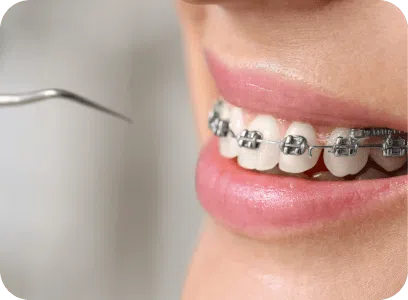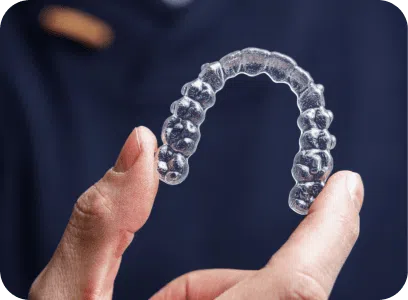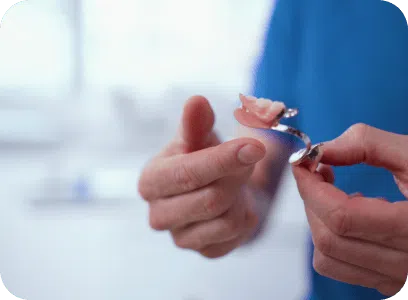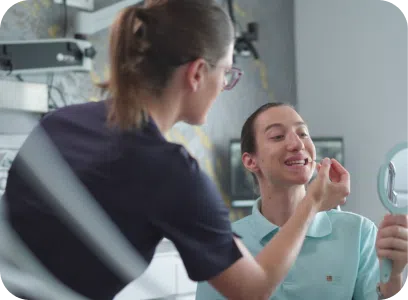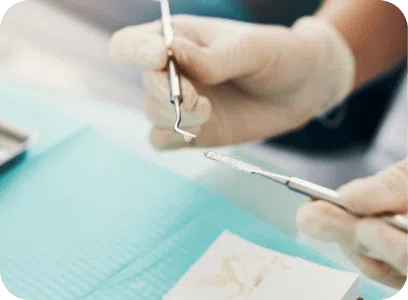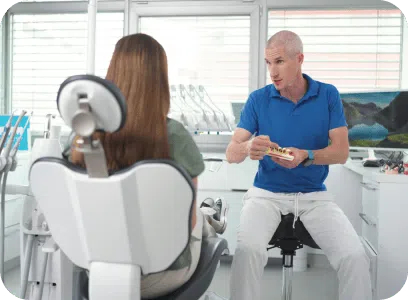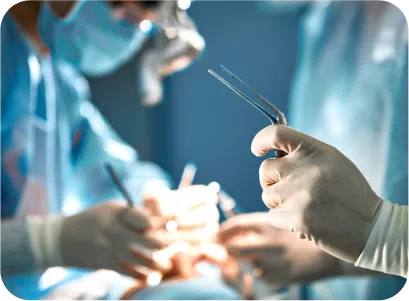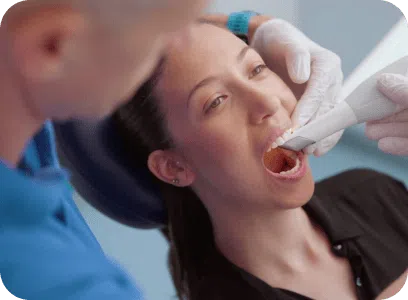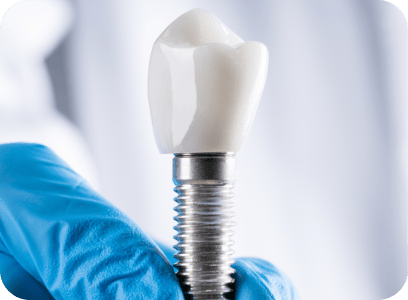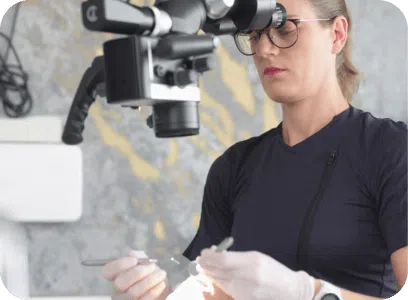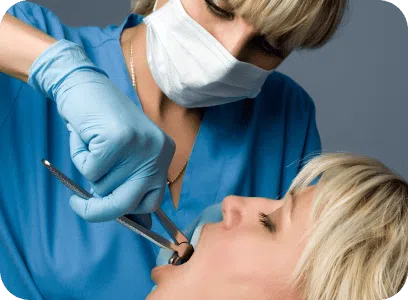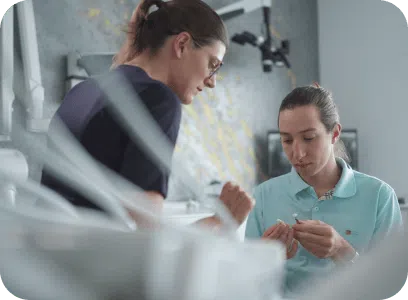Orthodontics
Orthodontics is a branch of dentistry that uses various techniques to move teeth into the correct, functional, and aesthetic position. The abnormalities we treat vary in complexity, and accordingly, there are several different treatment techniques available.
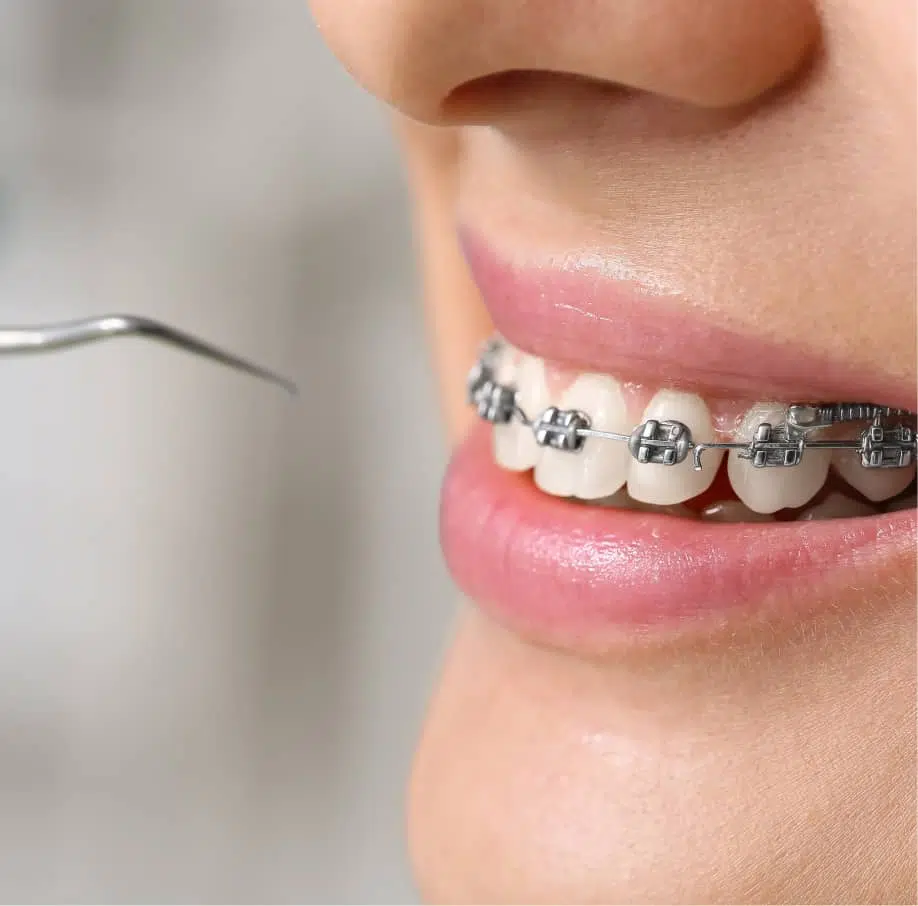
Experienced professionals
At Modri Zob, we have a skilled team of orthodontic specialists dedicated exclusively to orthodontic treatments. Their expertise and skills ensure top-notch care and successful outcomes.
Diverse options
We offer a wide range of orthodontic techniques, including invisible orthodontic appliances, traditional braces, and devices for faster treatment.
Comprehensive care
Our orthodontic team provides personalized attention to each patient, offering expert advice and support and ensuring the patients' well-being throughout their orthodontic treatment.
When to start treatment?
It is ideal to start treatment at an early stage in children, as teeth movements are easier and more effective. However, many adults also choose to straighten their teeth. Therefore, almost anyone, regardless of age, is suitable for orthodontic treatment.
Orthodontics as pre-preparation
In modern aesthetic dentistry, orthodontics is also used as a preparation before extensive rehabilitations, smile makeovers, or implant placements.
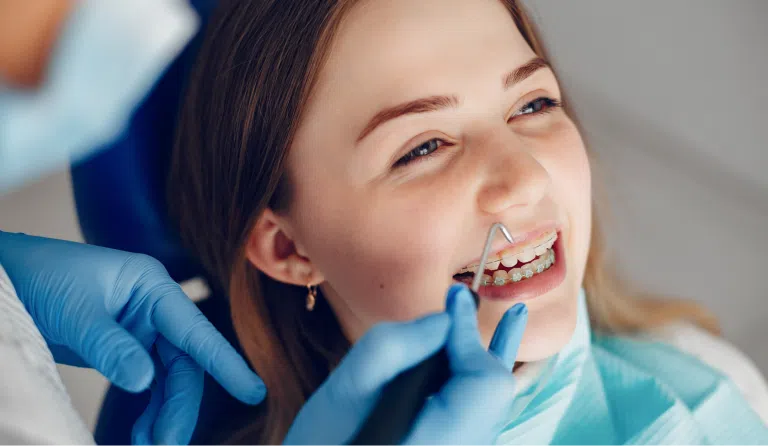
How does orthodontic treatment work?
Examination and diagnostics
At the initial examination, we will carefully assess your teeth, jaws, and facial structure to determine if you are a suitable candidate for orthodontic treatment. Using X-rays and dental impressions, we will obtain precise information about your condition, allowing us to plan the treatment accurately.
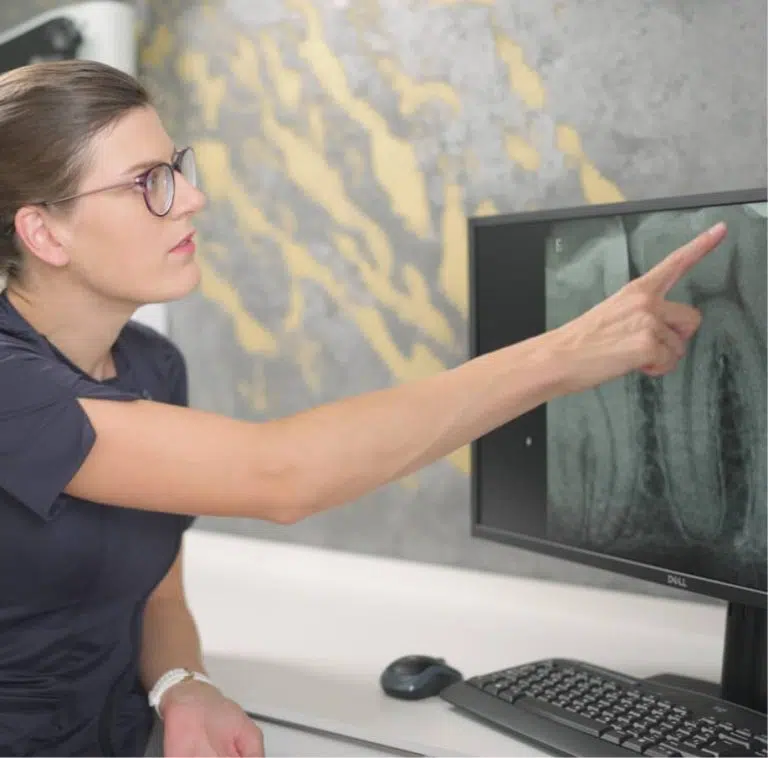
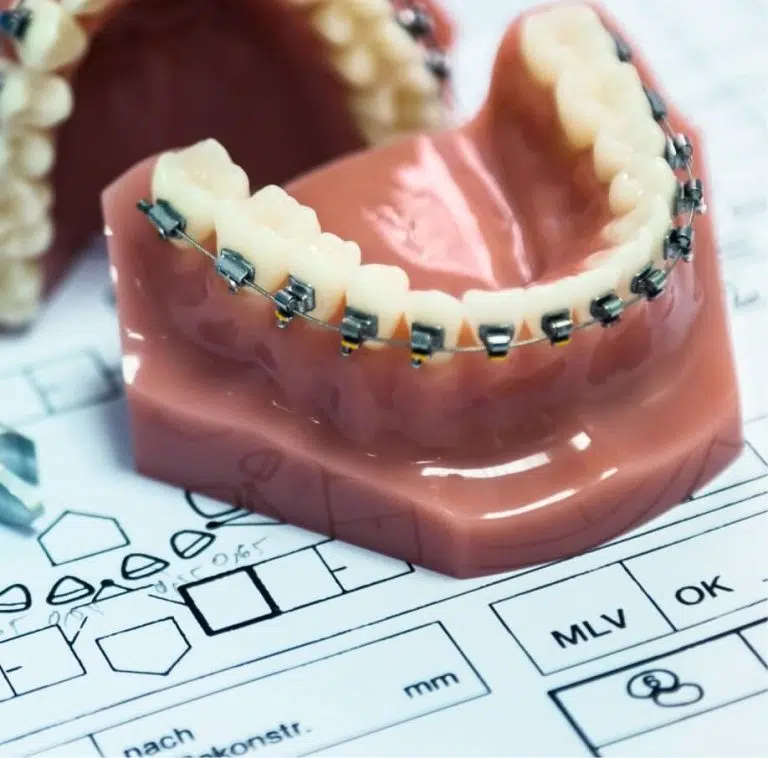
Individual treatment plan
After diagnosis, the orthodontist will develop a personalized treatment plan tailored to your needs and preferences. The plan will include selecting the most appropriate orthodontic appliance for your situation, the duration of treatment, and any potential limitations or care instructions for the teeth and appliance. This step is crucial as it provides a customized approach to achieve the desired result.
Implementation of orthodontic treatment
Once the treatment plan is agreed upon, we will begin the orthodontic procedure. Our experienced staff will fit the selected orthodontic appliance onto your teeth and provide detailed instructions on care and use. During treatment, we will regularly monitor progress and adjust the appliance as needed to achieve the best possible results. After treatment, we will ensure long-term care and advise you on the next steps to maintain your new, beautiful smile.
Experienced team of experts
Our skilled team of dentists brings extensive experience and knowledge, ensuring safe, effective, and personalized orthodontic treatment.
Improved oral hygiene
Correctly aligned teeth make cleaning easier and improve oral hygiene. Orthodontic treatment reduces the risk of tooth decay, gum disease and other oral health problems.
Wide range of orthodontic techniques
We offer various types of orthodontic appliances, including invisible aligners and traditional braces, to meet your needs and preferences.
Follow-up and support
Our team will provide comprehensive follow-up and support throughout the entire process to achieve the desired outcome.
Patients love us
... and their new smiles! 🙂

Modri zob Nova Gorica

Modri zob Kranj

Modri zob Kranj

Modri zob Kranj

Modri zob Nova Gorica

Modri zob Nova Gorica
Answers to frequently asked questions
How long do I need to wear braces?
The duration of wearing orthodontic appliances depends on the severity of tooth misalignment, averaging between 1 to 2 years. During orthodontic treatment, we regularly invite you for check-ups at Modri Zob to monitor progress and maintain oral hygiene. Braces can increase the risk of food and plaque buildup around the teeth, which can lead to cavities or decay if hygiene is poor.
Is moving teeth painful?
Moving teeth is not painful, but there may be some discomfort for a day or two when new active parts (new wire, new aligner) are placed.
When is the best time to start orthodontic treatment?
The optimal time to start orthodontic treatment is usually between the ages of 9 and 14, when the jaws are still developing. However, it is never too late for orthodontic treatment, as solutions can also be tailored for adult patients.
What is the difference between invisible orthodontic appliances and traditional braces?
Invisible orthodontic appliances, such as Invisalign, are made of transparent material and fit discreetly over the teeth. Traditional braces are attached to the outside of the teeth and are more noticeable. Invisible appliances offer comfortable wear and easy removal for eating and cleaning.
Does orthodontic treatment hurt?
At the beginning of treatment, there may be some discomfort or slight pain as the teeth move, but this usually subsides within a few days. Over time, patients get used to the appliance, and it no longer causes problems.
How long does orthodontic treatment take?
The duration of orthodontic treatment depends on the individual case, the severity of the misalignment, and the technique used. Treatment can last from several months to several years, depending on the patient’s needs.
Does orthodontic treatment affect eating?
With some orthodontic appliances, it is advisable to avoid foods that could damage the appliance. With invisible aligners like Invisalign, the appliance is removed during eating, allowing normal eating without restrictions. You will receive specific dietary instructions during your examination.
How long is the wait for braces?
The waiting period for orthodontic treatment covered by ZZZS can be quite long, up to 8 years. Waiting times vary between clinics, so it is best to check on the ZZZS website. For self-paid treatment, waiting times are almost non-existent, and you can expect the first examination and later the appliance within a few weeks.
When are braces needed?
The most common reasons for braces include improper alignment of teeth in the upper arch relative to the lower arch, size discrepancy between the upper and lower jaw, overcrowding, supernumerary or missing teeth, teeth in the wrong places, and teeth too large or small for the jaw size. Additional reasons for braces can include early loss of baby teeth (due to decay or injury), incorrect jaw position, improper bite, and biting into the palate or cheek.
Are there any unwanted side effects or consequences of wearing braces?
Despite significant advancements in orthodontics over the past 20 years, side effects of orthodontic treatment still occur. Consequences of wearing braces can include temporary issues: gum pain, feeling that teeth are loose, and minor injuries on the inner side of the lips due to rubbing against the appliance. Poor oral hygiene can lead to gum disease and bleeding, tooth decay, staining around the braces, and shortening of tooth roots. After completing orthodontic treatment, there is a chance that the teeth might return to their original position, so it is essential to wear a removable retainer or a retention wire on the inner side of the teeth to keep them in place.
You might also be interested in...
